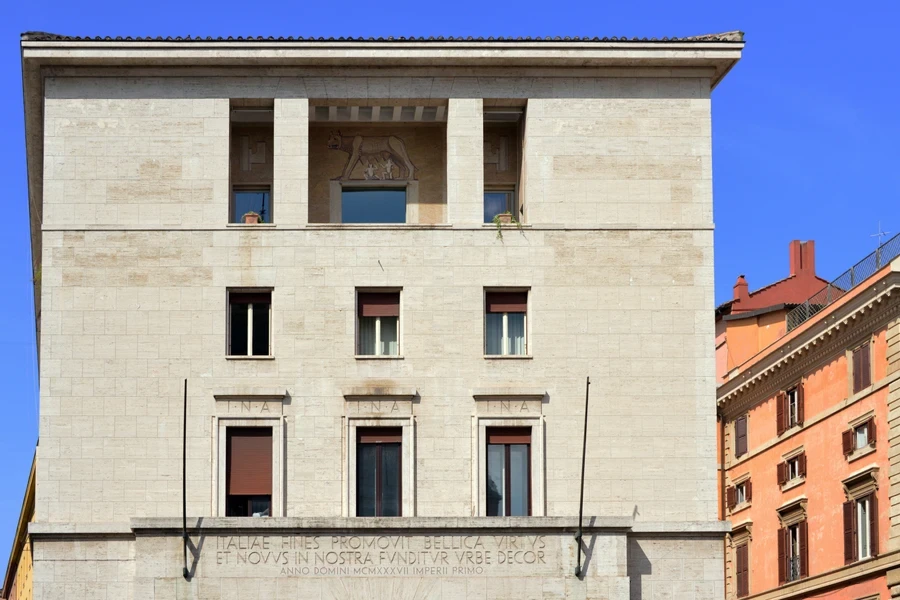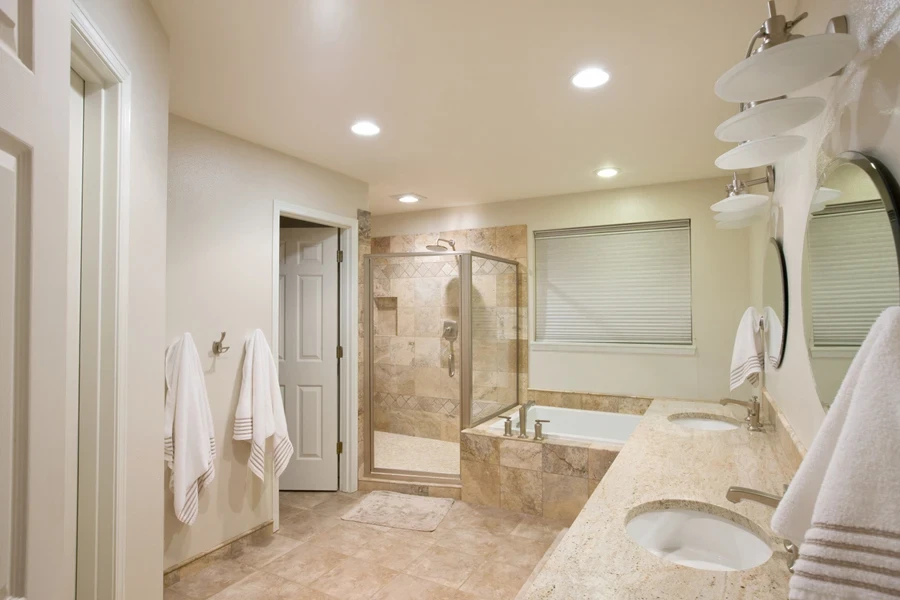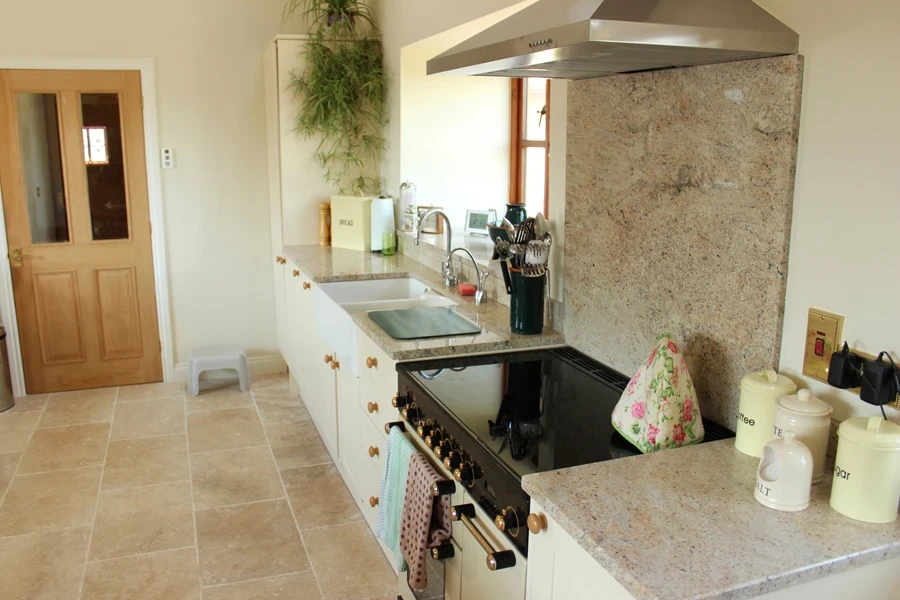A symbol of timeless luxury and elegance, travertine has played a major role throughout the history of European architecture, and is now in high demand in many countries worldwide. Durable, versatile, and resistant to wear, this material is perfect both for indoor and outdoor use, with its greatest charm lying in the irregularity of its surface, which gives it a unique, distinctive, and, yes, even contemporary beauty.
Travertine’s name derives from the Italian city of Tivoli, once called Tibur, a few miles from Rome. It was here that the ancient Romans exploited travertine quarries for the construction of roads, buildings, and some of the most iconic landmarks in the world today, including the Colosseum, the Bernini colonnade of St. Peter’s Basilica, and the splendid Trevi Fountain.
In this article, we will explore everything modern home design retailers must know to leverage this ancient material to meet growing demand and drive sales.
Table of Contents
Learning about this unique material
Travertine’s uses and trends
Conclusion
Learning about this unique material

People often mistakenly believe travertine to be a natural stone or a type of marble; in reality, it is neither. Travertine is a sedimentary rock composed almost exclusively of calcium carbonate (as well as traces of quartz, clay minerals, iron, and sulfur), formed over centuries by the deposition of sediments and where external forces such as pressure and temperature have been minimal.
The characteristic structure and unique texture that has made this material so sought after comes from the presence of vegetal elements that also degraded within the rock. This also makes travertine a very low-maintenance and compact material that tends to harden when exposed to air over time.
Colors and looks
There are many varieties of travertine, ranging from gray to bright red, making it easily adapted to many types of interiors and styles. While travertine may have been popularized in Italy, it is also mined in Tunisia, Egypt, Iran, Turkey, and Chile. To demonstrate its spread, the famous Basilica of the Sacred Heart in Paris was built with French travertine.
The most common Italian travertines range from beige to pink, and span gray, yellow, and gold, with spectacular variants such as alabaster, walnut travertine, Silver Rapolano (named for its place of extraction) in between. This is the characteristic look that many synthetic travertine manufacturers try to recreate either in stone or via peel-and-stick backsplashes, tiles, and other surface covers.
Market data
According to Market Search Future data, the travertine market was worth USD 3.32 billion in 2023 and will experience a steady CAGR of around 3.44% to reach USD 4.5 billion by 2032, mostly driven by urbanization.
Travertine’s uses and trends
Travertine is one of the most iconic materials in the history of architecture, and it has been used since ancient times to create some of the most important and long-lasting works in the world.
This fascinating material has recently returned to the fore, carving out a prominent place in contemporary architecture projects and the interiors of homes and public spaces. Below, we’ll take a look at how it is being used today, as well as the latest design trends related to this extraordinary stone.
Outdoors

As we’ve already seen, the masters of travertine were the ancient Romans. A small tour of Rome is enough to see statues, arches, forums, floors, claddings, and large architectural works entirely made of this extraordinary material. Today, travertine facades adorn contemporary buildings in many cities around the world, and it’s also a popular choice for architects when designing private homes and villas.
Travertine is a perfect fit for exterior spaces, public buildings, such as bathhouses and thermal spas, and it’s also frequently used for memorials and cemetery works.
The timelessness of this material means that it has remained popular despite the famously mercurial nature of fashion and style.
Indoor floors and surfaces

The use of travertine for flooring and coverings of kitchens, showers, and bathrooms is popular thanks to its resistance to humidity and temperature changes and the wide variety of colors and treatments available.
Innovative tools and refined techniques allow travertine flooring to achieve different looks and finishes and be adapted to the style of most interiors, whether ancient or modern, industrial or minimal.
Large travertine floor tiles or slabs are ideal for larger surfaces, while smaller tiles can be used to create mosaics for smaller design choices.
Tables and kitchen counters

Thanks to its durability, travertine is becoming increasingly popular for creating dining tables, kitchen countertops, and bathroom vanities, matching a broad range of furniture. Builders can take advantage of the material’s various finishing possibilities, a process which usually involves first filling with special cement, mastic, marble fillers, and resins before closing the characteristic alveoli (holes) and making it more compact and resistant to processing.
Consumers can choose different finishings for these pieces. The main types are brushed, smooth, and polished, giving the material a softer, more opaque, or brighter appearance, respectively. Among the most sought-after treatments are bush-hammering and sandblasting, which mimic the effect of exposure to atmospheric agents or particular conditions of use.
Travertine fireplaces

Travertine fireplaces fit perfectly into any environment, coming in rustic styles as well as contemporary and minimalist looks. Finishing techniques give them added resistance to thermal changes.
Conclusion
Travertine has been a popular choice for those seeking aesthetics and functionality for millennia. This natural limestone combines tradition and innovation, perfectly fitting external facades to modern interiors and adapting to multiple styles and intended uses.
In an era when architecture favors the fusing of classic and contemporary elements, travertine continues to stand out as one of the most elegant and hardy solutions available on the market.




